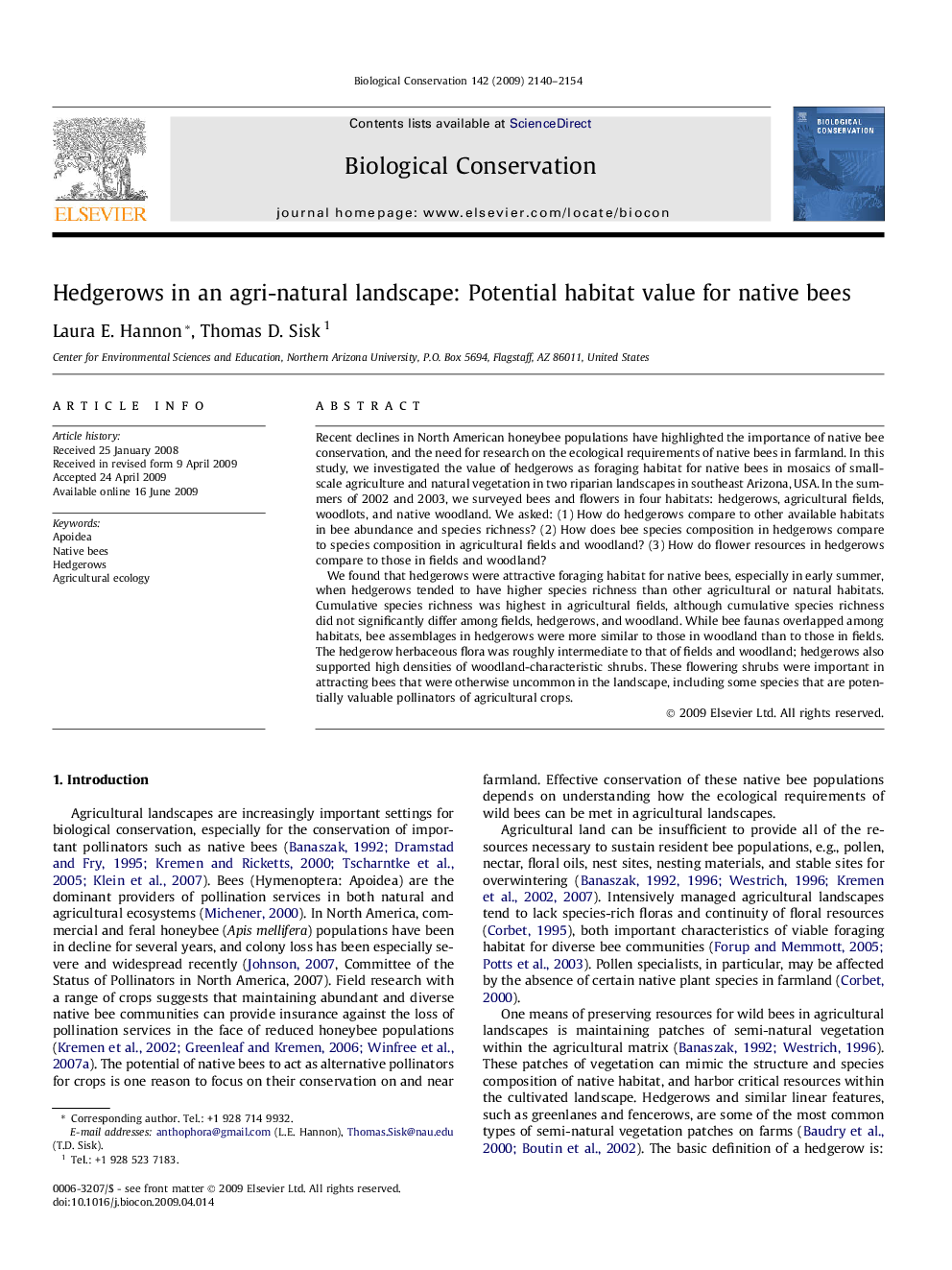| Article ID | Journal | Published Year | Pages | File Type |
|---|---|---|---|---|
| 4386210 | Biological Conservation | 2009 | 15 Pages |
Recent declines in North American honeybee populations have highlighted the importance of native bee conservation, and the need for research on the ecological requirements of native bees in farmland. In this study, we investigated the value of hedgerows as foraging habitat for native bees in mosaics of small-scale agriculture and natural vegetation in two riparian landscapes in southeast Arizona, USA. In the summers of 2002 and 2003, we surveyed bees and flowers in four habitats: hedgerows, agricultural fields, woodlots, and native woodland. We asked: (1) How do hedgerows compare to other available habitats in bee abundance and species richness? (2) How does bee species composition in hedgerows compare to species composition in agricultural fields and woodland? (3) How do flower resources in hedgerows compare to those in fields and woodland?We found that hedgerows were attractive foraging habitat for native bees, especially in early summer, when hedgerows tended to have higher species richness than other agricultural or natural habitats. Cumulative species richness was highest in agricultural fields, although cumulative species richness did not significantly differ among fields, hedgerows, and woodland. While bee faunas overlapped among habitats, bee assemblages in hedgerows were more similar to those in woodland than to those in fields. The hedgerow herbaceous flora was roughly intermediate to that of fields and woodland; hedgerows also supported high densities of woodland-characteristic shrubs. These flowering shrubs were important in attracting bees that were otherwise uncommon in the landscape, including some species that are potentially valuable pollinators of agricultural crops.
